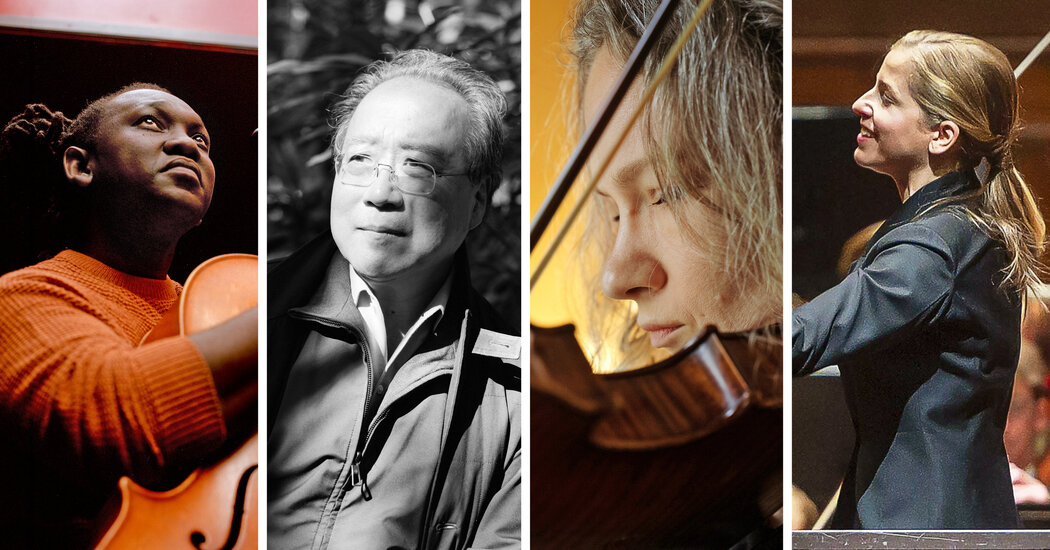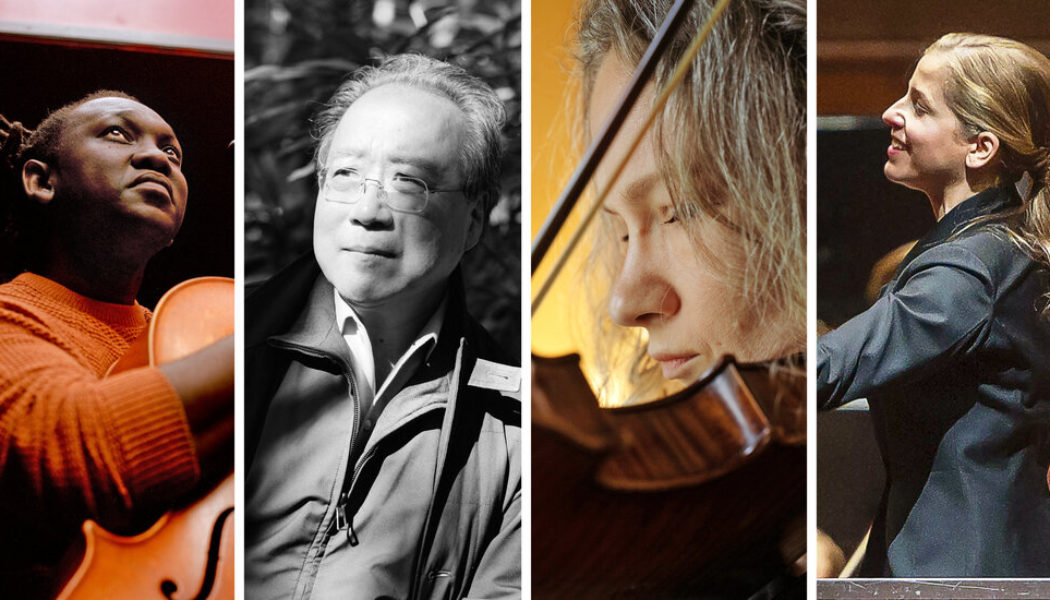
The company says it has a fix for the unwieldy world of classical streaming. But it’s unclear how much traction a stand-alone app can get.
In the streaming era, fans of classical music have had reason to grumble.
It can be hard for veteran listeners to find what they want on platforms like Spotify, Tidal, Amazon and YouTube, which are optimized for pop music fans searching for the latest by Taylor Swift or Beyoncé. And for curious newcomers, it can be difficult to get beyond algorithmic loops of Pachelbel’s “Canon in D Major” and Mozart’s “Rondo Alla Turca.”
Apple last week released a stand-alone app meant to address these problems. The app, known as Apple Music Classical, features a refined search engine, a sleek interface and a host of features aimed at making classical music more accessible, including beginners’ guides to different musical eras and commentary from marquee artists like the violinist Hilary Hahn and the cellist Yo-Yo Ma.
Apple hopes that the app, which has been in development since 2021, when the company acquired Primephonic, a classical streaming start-up in Amsterdam, will attract die-hard classical fans and new listeners alike. But it remains unclear how much traction the app can get in a crowded streaming market, in which Apple competes with behemoths like Spotify as well as dedicated classical services like Idagio.
“This is just the beginning,” Oliver Schusser, a vice president at Apple, said in an interview, adding that Apple would continue to improve and build the app’s database. “We’re really serious about this.”
I spent a few days putting Apple Music Classical to the test, trying out its search, playlists and guides to classical music. (The app is currently available only on iPhone, though an Android version is in the works; at the moment, there is no desktop version.) Here are my impressions.
Cutting Through the Metadata
For pop music, a listing of artist, track and album is generally sufficient. But in classical, there are more nuances in the metadata: composer, work, soloist, ensemble, instrument, conductor, movement and nickname (like Beethoven’s “Emperor” concerto or Mahler’s “Resurrection” symphony).
Apple has amassed 50 million such data points, the company says, in the app — encompassing some 20,000 composers, 117,000 works, 350,000 movements and five million tracks — and its search function generally feels more intuitive than its rivals.
On many streaming platforms, I have struggled to find Rachmaninoff’s recordings of his compositions. A search for his name on Spotify, for example, returns a disorderly display of his most popular works, such as “Rhapsody on a Theme of Paganini,” performed by a wide variety of artists.
But on Apple Music Classical, it is easier to quickly locate his recordings because the app can distinguish between Rachmaninoff the composer and Rachmaninoff the pianist or conductor. The search function is not perfect; a Rachmaninoff track by the Chinese pianist Niu Niu also shows up in the mix of recordings by Rachmaninoff. But the app makes it much easier to hunt down specific pieces of music.
A Sprawling Collection
Apple Music Classical has a clean and inviting interface that mimics the main Apple Music app. But it still struggles with a problem that has long vexed classical streaming: the sheer volume of the catalog.
A search for Verdi’s “Aida,” for example, turns up an eye-popping 1,330 recordings. Apple has tried to make it easier to navigate a sprawling list like that. A page for “Aida,” for example, has a brief description of the opera, an “editor’s choice” recording (Antonio Pappano and the Orchestra dell’Accademia Nazionale di Santa Cecilia) and five of the most frequently played versions.
But it can still feel overwhelming. It helps to know exactly what you’re looking for: the list can be searched, scrolled or sorted by popularity, name, release date or duration. If you’re interested in recordings of “Aida” featuring Leontyne Price in the title role, for example, you can type in “Leontyne” and find her performances under the baton of Erich Leinsdorf, Georg Solti, Thomas Schippers and others.
Opera can be especially difficult to navigate on streaming platforms because of long lists of cast members. While Apple comprehensively lists singers on each track, it can be hard to figure out quickly who the stars are when perusing albums. This could be fixed through more consistent album descriptions, or an option to enlarge album covers to make the words more legible. And while Apple has introduced the ability to search by lyrics for pop songs, no such feature exists in classical yet.
Apple makes the vastness of the classical repertoire more manageable through inventive playlists, which help resurface celebrated recordings. These playlists cover a variety of genres, including opera, Renaissance music, art song and minimalism. There are also lists for composers, including the usual suspects — Bach, Mozart, Beethoven — as well as contemporary artists like Kaija Saariaho and Steve Reich. “Hidden Gems” highlights overlooked albums (“Breaking Waves,” a compilation of flute music by Swedish women, for instance, or “Consolation: Forgotten Treasures of the Ukrainian Soul”). “Composers Undiscovered” showcases lesser-known works by prominent composers, like Beethoven’s Scottish songs.
Attracting Newcomers
Apple hopes the app will help draw new listeners to classical music, and many features are aimed at shedding its elitist image.
On the home screen, the app offers a nine-part introduction called “The Story of Classical,” described as a guide to the “weird and wonderful world of classical music.” The series takes listeners from the Baroque to the 21st century, with forays further back, into medieval and Renaissance music.
A series called “Track by Track” features commentary by renowned artists, including Hahn and Ma. The cellist Abel Selaocoe, introducing an album of pieces by Bach and South African and Tanzanian folk songs, describes how hymnal music from England and the Netherlands mixed with African culture. The pianist Víkingur Olafsson talks about feeling naked onstage when he plays Mozart’s Piano Sonata No. 16, “a piece we all have to face as pianists.”
Part of Apple’s mission appears to be to help elevate overlooked artists, particularly women and people of color. For example, a tab of composers begins with Beethoven, Bach and Mozart but then expands to Clara Schumann, Caroline Shaw and Errollyn Wallen, as well as William Grant Still.
The pianist Alice Sara Ott and the conductor Karina Canellakis are featured on an exclusive recording of Beethoven’s Piano Concerto No. 1 with the Netherlands Radio Philharmonic.
While using the app on a recent morning, I encountered the music of Hildegard von Bingen, a 12th-century Benedictine nun and composer of Gregorian chants. Hildegard, I soon discovered, is something of a star on the app, where she is described as a scientist, mystic, writer and philosopher and sits adjacent to Tchaikovsky on a composer roster. (Many of the great composers have been given enhanced digital portraits as part of Apple’s efforts to make them more realistic; Hildegard is shown in a habit, with a piercing stare.)
Hildegard’s music could easily be lost in the chaos of streaming. But in the Apple universe, it gets fresh life.









